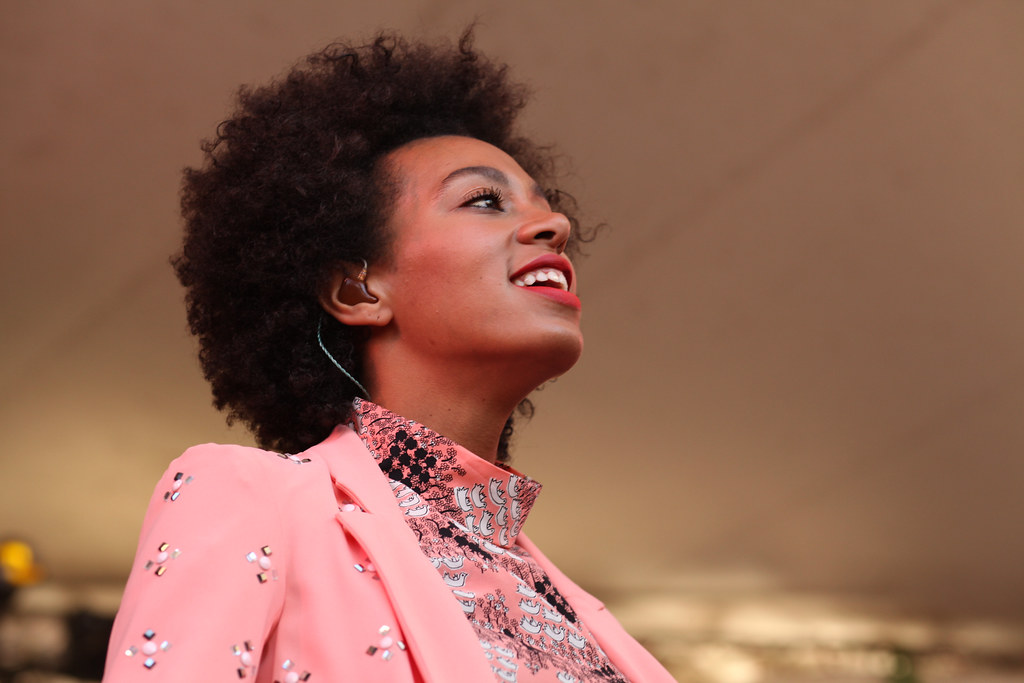Solange once sang, “Don’t touch my hair, When it’s the feelings I wear … Don’t touch my crown, They say the vision I’ve found.” As a young Black woman, I resonate deeply with Solange’s words, as my hair is integral to both my racial and cultural identity. Her message is emblematic of the ideals of the recent natural hair movement, which emerged in the late 2000’s to encourage Black people — particularly Black women and femmes — to reject chemical relaxers and texturizers and embrace their natural kinks, curls, and coils. This movement has been led by prominent creatives such as Solange, social media influencers documenting their natural hair journeys, and everyday people wearing their natural hair more frequently.
Although the movement has empowered a new generation to love their natural hair, anti-Black hair discrimination persists. In the past four years alone, students like Andrew Johnson and Nicole Pyles were forced to cut their hair during school sporting events to conform to prejudiced hairstyle guidelines. Sales representatives like Imani Jackson and news anchors like Brittany Noble-Jones were terminated from their jobs for wearing their natural hair in the workplace. Even within the natural hair community, discrimination against tighter-textured hair, called texturism, amplifies this marginalization for many Black people. While the natural hair movement has made a remarkable impact, it alone cannot remedy centuries of racist institutions and messaging. Moving forward, we must continue to address anti-Black hair discrimination through policy change and a radical dismantling of Eurocentrism, both within and beyond the movement.
A prime example of a systemic solution is the Creates and Respectful and Open and World for Natural Hair (CROWN) Act, which passed the U.S. House of Representatives in March 2022. The CROWN Act extends civil rights protections to natural hairstyles — including braids, locs, bantu knots, twists, and afros, among other styles — protecting individuals from hairstyle-based discrimination in professional and academic settings. According to the Dove CROWN Research Study, Black women’s hair is 3.4 times more likely to be perceived as unprofessional, and Black women are 1.5 times more likely to be sent home from the workplace because of their hair. Furthermore, the Dove CROWN Research Study for Girls found that 45% of the surveyed Black girls reported experiencing hair bias and discrimination. The CROWN Act is crucial in combating this anti-Black hair discrimination.
As of now, the CROWN Act has been passed in 19 states and many local jurisdictions throughout the country, but until the CROWN Act passes the U.S. Senate, it is not federal law. And many states with significant Black populations, such as Georgia, Alabama, Texas, South Carolina, and my home state of North Carolina, have yet to pass any legislation combatting anti-Black hair discrimination.
The pushback against the CROWN Act also shows that despite the progress made by the natural hair movement, many fail to understand the immense ramifications of antiblack hair discrimination. As an organizer for the North Carolina CROWN Act in 2021, I saw firsthand how conservative lawmakers denied the impact of anti-Black hair discrimination on Black people in America. As long as those in power ignore anti-Black hair discrimination, it will persist. It is as simple as that.
In addition to implementing policy-based solutions, we must counteract the Eurocentrism within the natural hair community and how it creates hierarchies of texturism. From the underrepresentation of tighter hair textures in hair product marketing, to the real-life and online prejudice against Black people with tighter-textured hair, this pervasive issue perpetuates anti-Blackness. The future of the natural hair movement must be an affirming space for hair textures of all types.
Due to texturism within the natural hair community, many Black women and femmes were disappointed by the natural hair movement. In a YouTube video titled “The Natural Hair Movement Failed,” content creator Jouelzy points to the corporate exploitation of texturism as the pitfall of the movement, sharing:
“There was an overrepresentation of shiny, highly defined curl textures … of biracial, multiracial, and ‘Black-adjacent’ women being centered in the campaign. This movement always becomes about what can be commodified and what Black women can be sold about. … Rather than truly servicing our needs, [corporations] quickly change the messaging to tell us what we need to buy to achieve this aesthetic that is not naturally attainable.”
Jouelzy’s sentiments are shared by many other young Black women and femmes with tighter-textured hair, some of who have returned to chemical relaxers and texturizers and some who are publicly embracing their tighter coils in spite of texturist backlash. But it is our responsibility as a community — especially those of us with looser-textured hair — to fight against texturism. We must actively uplift tighter-textured influencers, advocate for inclusive representation within natural hair companies, and counter texturist messaging when it arises. Furthermore, we must condemn the exploitative practices of natural hair companies that promote Eurocentric beauty standards.
To ensure that the natural hair movement remains salient in 2022, it is crucial that we codify natural hair protections nationwide and dismantle Eurocentric hierarchies within the community. By addressing the institutions and cultural norms that perpetuate anti-Black hair discrimination — within both the national hair movement and policy measures — we can strive towards a more equitable future in which all facets of our Black identity are affirmed. In the words of Solange: “Don’t touch my pride.” Our hair is our pride, and it deserves to be accepted and protected.
Image by Anna Hanks is licensed under the Flickr License.



